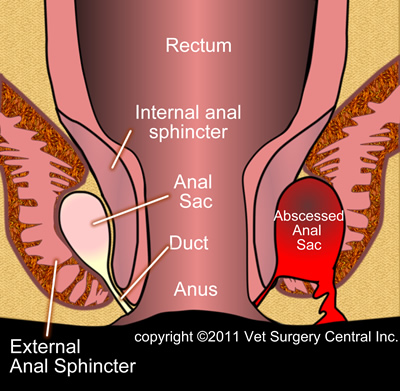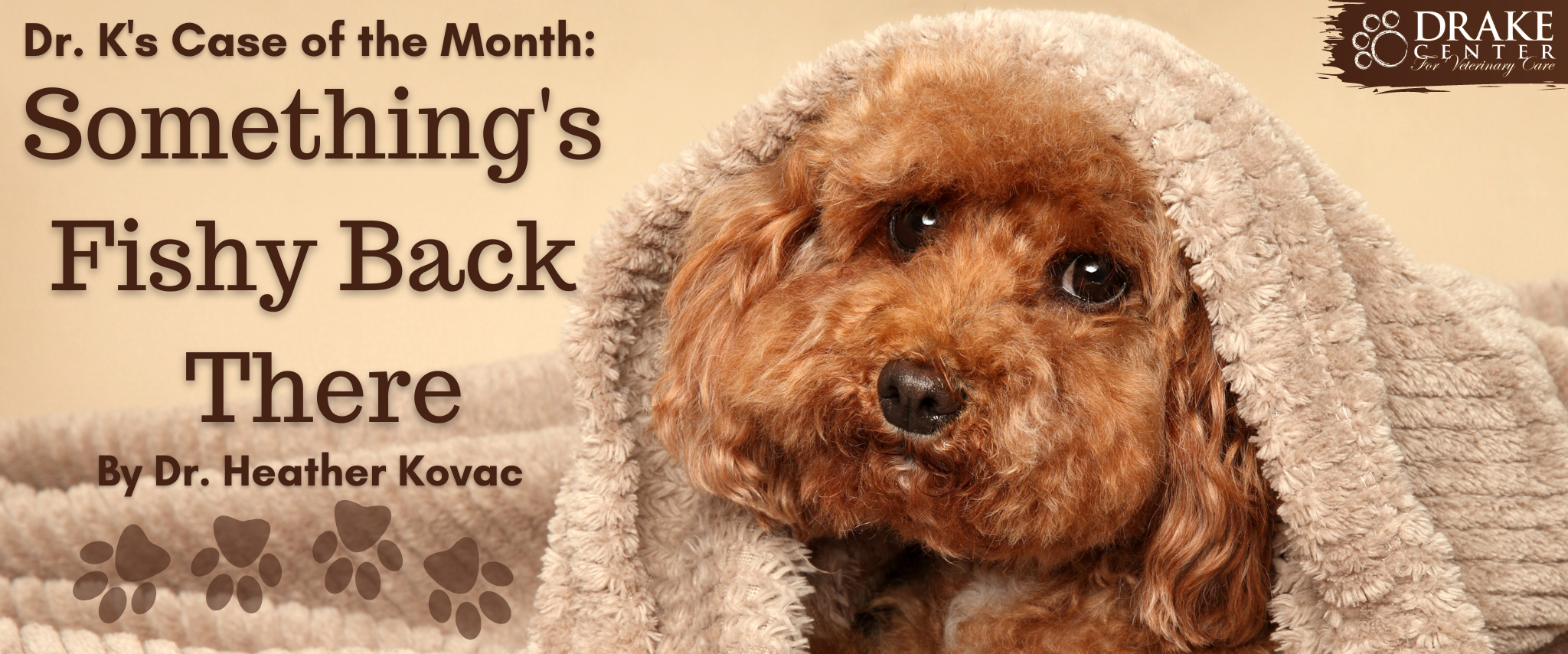The Patient
Maggie, a 10-year-old spayed female toy poodle, came to see me because her owners had noticed some blood coming from her rear end. She was also licking the area excessively.

The Case
On physical examination, I found a swelling about the size of a large cherry tomato just to the right of her anus and the area was very bruised and bleeding slightly. She was trying to lick it and was also scooting her bottom on the floor. All these clinical signs point to a problem with the anal sac. Dogs (and cats) have two anal sacs that are located at 5:00 and 7:00 in relation to the anus and are the remnant of a scent gland. Pets express their anal sacs with each bowel movement by contracting the muscles around the anus leaving a “calling card” on their feces. Most owners don’t even know they have these scent glands as they don’t normally cause a problem. But, if the sac gets too large, either from an inability to empty the contents, or a malformation in the sac itself, the anal sac will rupture through the skin and cause an infection of the surrounding tissues. I performed a rectal exam on Maggie and on gentle palpation of the swelling with my finger, the delicate tissue ruptured oozing a brown bloody fluid. I was able to gently remove all the contents of the swelling, relieving the built-up pressure and pain. The area was very bruised and red and the tissues were severely thickened and inflamed. When the anal sac does not empty properly, the fluid that lives inside becomes more and more desiccated/dry leaving a pasty substance that is more difficult to express. Her left anal sac was small and normal and easily expressed. I shaved the area and cleaned it with an antiseptic solution.

The Treatment Plan
I prescribed an oral antibiotic as well as a medication for pain and inflammation. I also sent home an E-collar so Maggie could not lick at the site. I instructed the owner to use a warm wet washcloth to compress the area twice daily to help with swelling and to keep it clean. I scheduled a recheck for 14 days. Dogs will scoot or drag their bottom along the floor if their anal sacs are bothering them. They may also turn and look at their rear end quickly or cry out during a bowel movement. Sometimes, dogs will leak anal sac fluid on furniture or bedding if they are overly full. Anal sac material is very stinky; I would describe it as a fishy musky odor. Dogs and rarely cats can also get tumors associated with the anal sacs. This is a highly malignant form of cancer that can spread rapidly throughout the body. It is recommended that dogs over the age of 8 have annual rectal examinations to screen for this type of cancer.
The Outcome
At the recheck exam, Maggie was feeling much better. The skin over the right anal sac was looking all normal and there was no further bleeding or swelling. On the rectal exam, the anal sac was empty but there was still some mild thickening of the surrounding tissues. This is normal after a severe infection and will continue to improve with time. Maggie had finished all her medications and I told her owner she could now remove the cone. Maggie was all better. If you suspect a problem with your pet’s rear end or would like to schedule an examination, please give us a call at (760) 753-9393.
The Drake Center for Veterinary Care is an AAHA-accredited animal hospital located in Encinitas, CA. The Drake Center loves being a source of information for all pet owners across the country, however, if you have any questions regarding pet care and do not live in Encinitas, CA or surrounding cities, we encourage you to contact your local veterinarian.


